Improving LoRa® Point-to-Point Network: Field Test for Optimization Solution
Due to high interference, LoRa® cannot yet reach more than 2 kilometers when installed in populated locations such as cities. Furthermore, most off-the-shelf LoRa® Nodes are power-hungry and cannot operate on battery power for more than three days.
To improve the situation of high dependence on power and the narrow transmission range of LoRa® in the urban area, Aiman Akid deployed an optimization project for LoRa® point-to-point network. The purpose of the project is to build two optimization strategies and then assess the node’s operation. The first is the RTOS approach, which is Deep Sleep, to minimize the power consumption of the LoRa® sensor node. And the other is adding another LoRa® node as an intermediary node to extend the network transmission distance. To view the original project on hackster.io, please refer here.
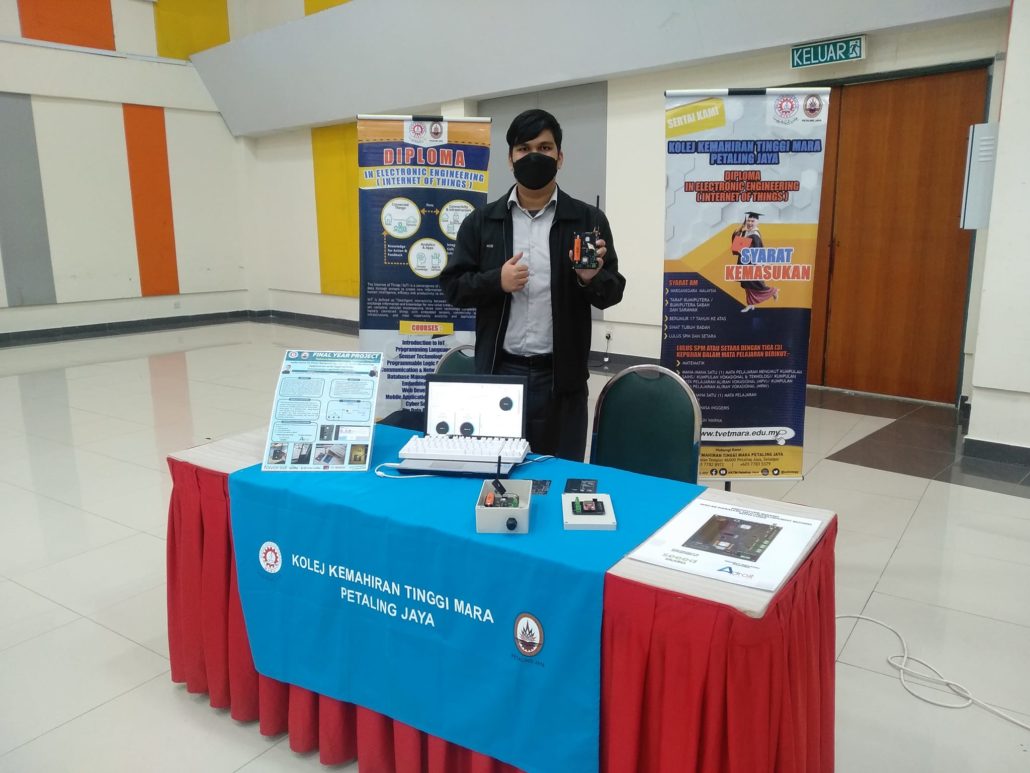
Aiman Akid
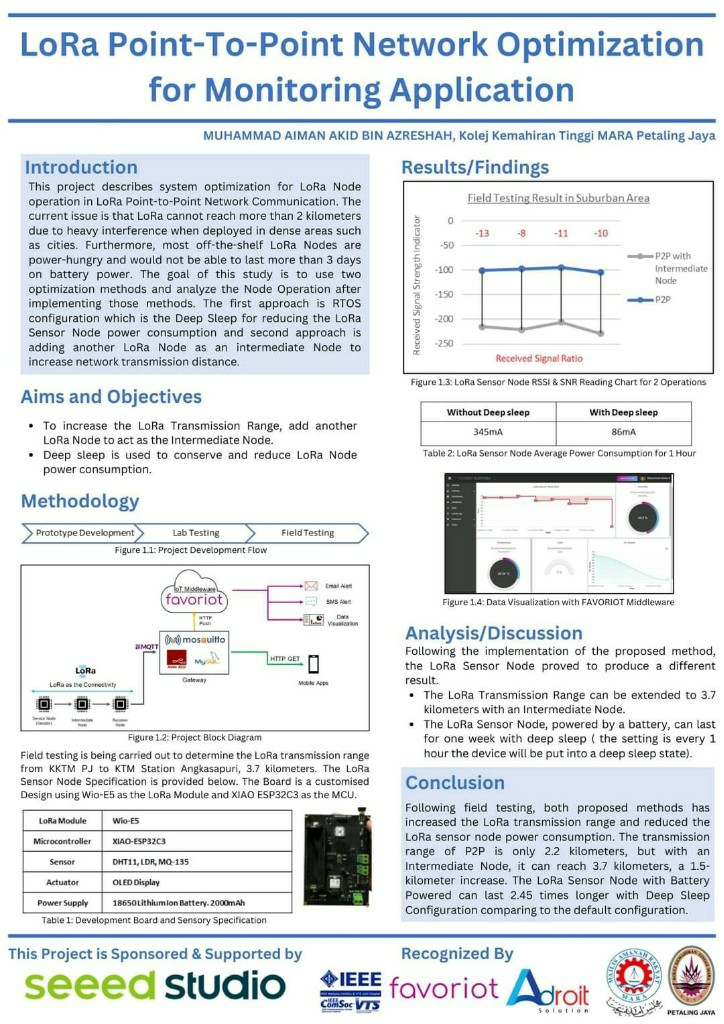
Project Publication
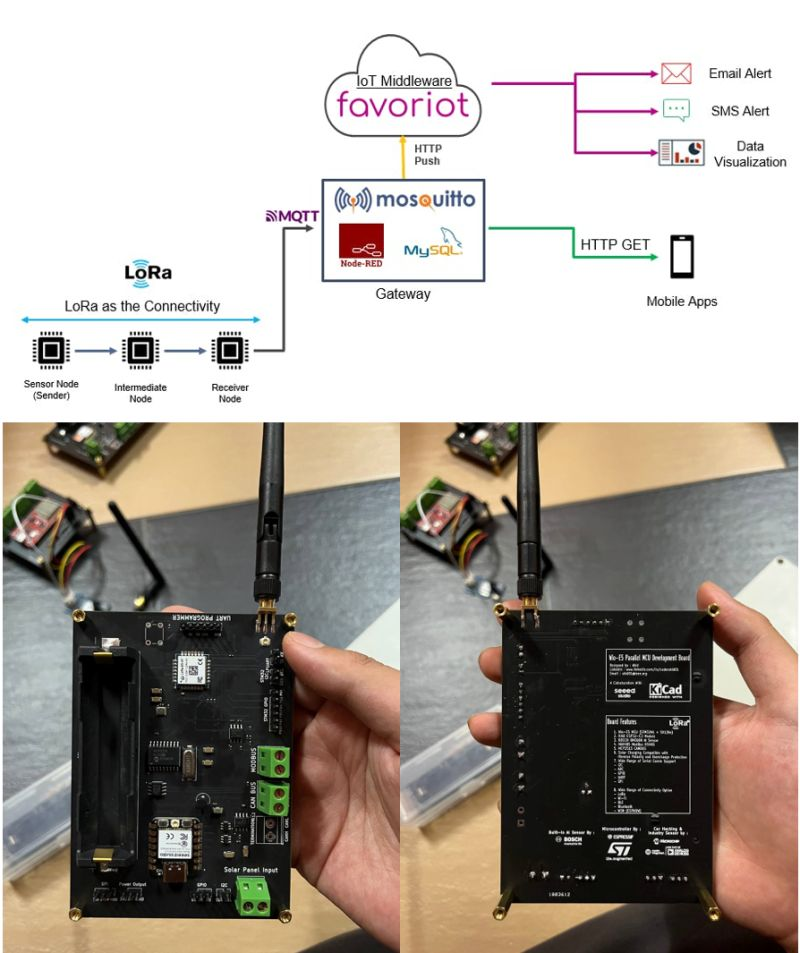
Architecture of the Project & Development Board made By Fusion for this Project
Implementation of the Field Test
Set up the Wio-E5 Parallel MCU Board
Designed by Aiman and manufactured by Seeed Fusion PCB Assembly Service, this customized Wio-E5 development board contains a Wio-E5 wireless LoRa® module and the XIAO ESP32C3 MCU. This parallel development board serves as the LoRa® receiver.
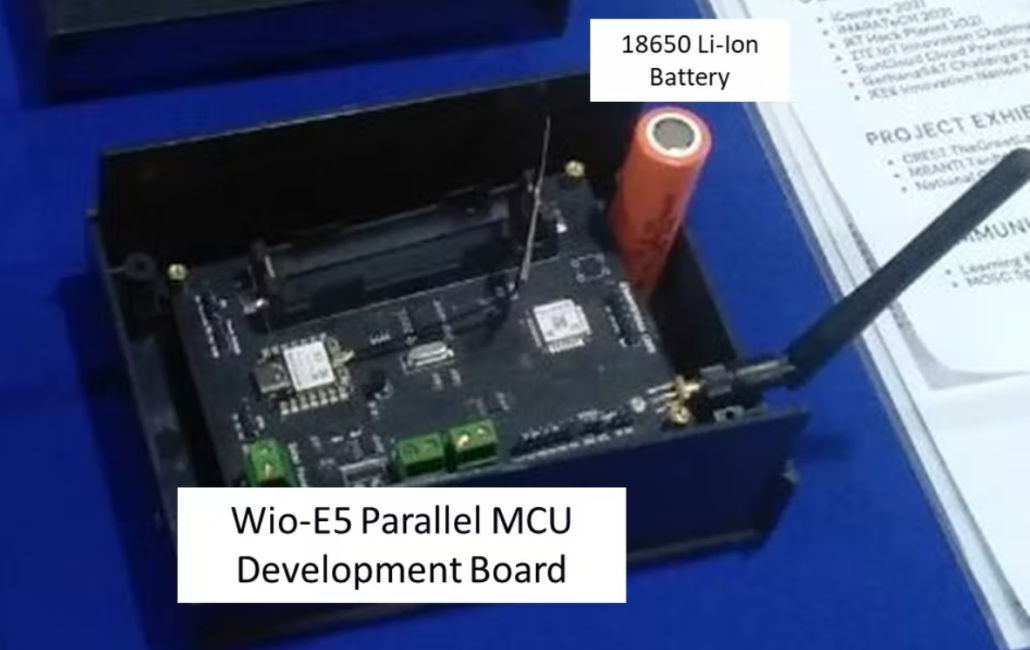
Wio-E5 Development Board as the Receiver
Set up the LoRa® Sensor Node
The following is the board casing view.
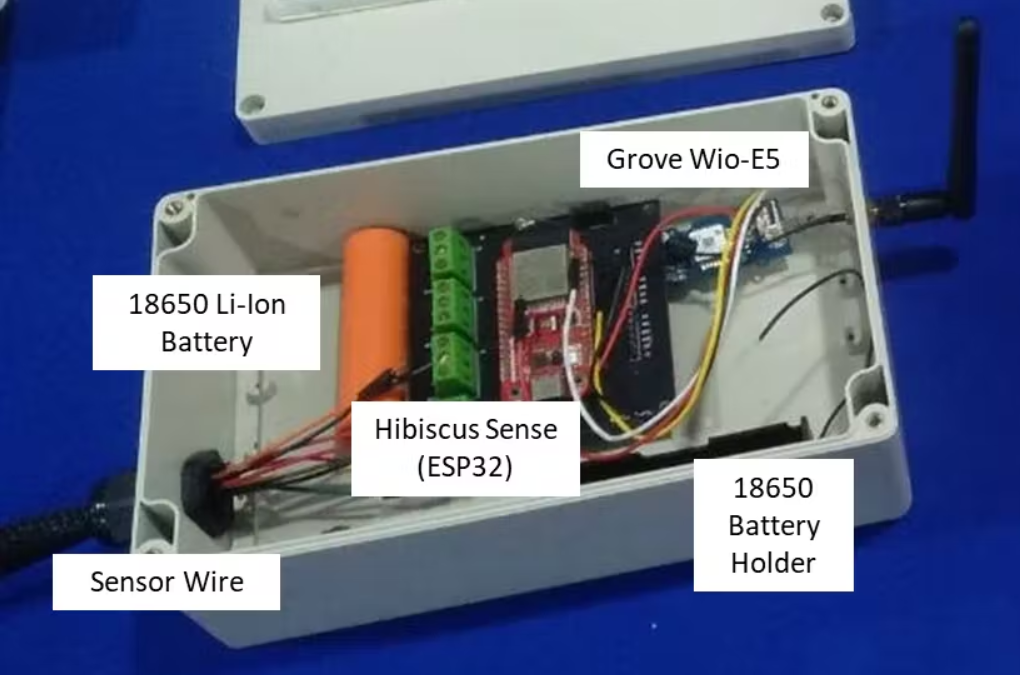
Inside of the Wio-E5 & ESP32 Board and Circuit
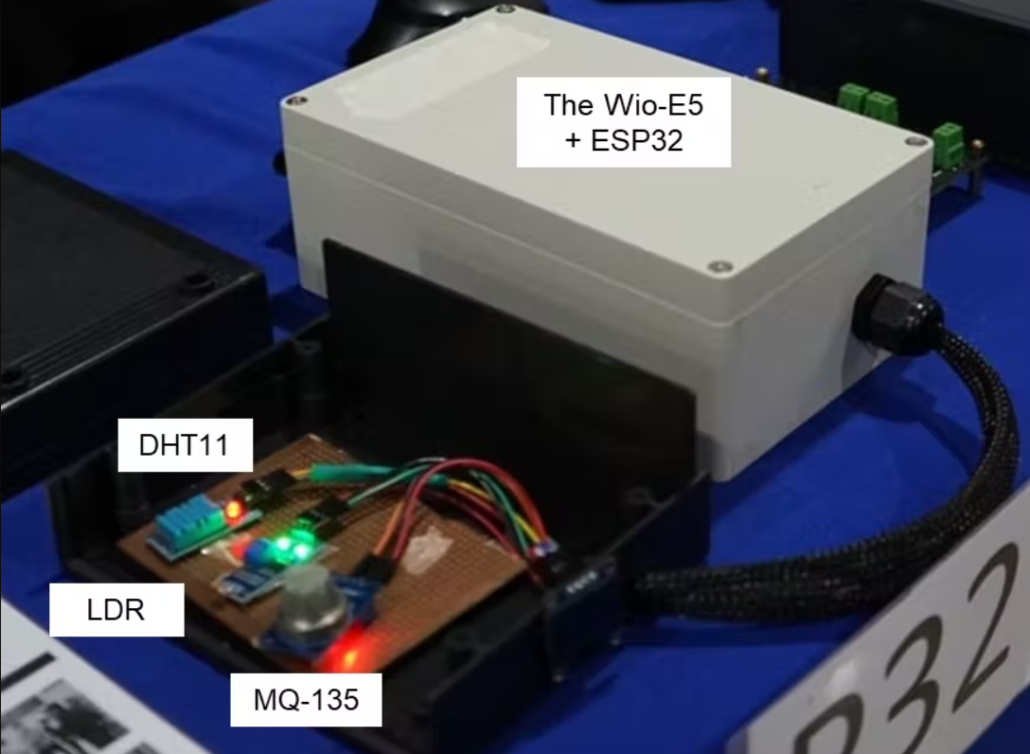
The Entire LoRa® Sensor Node
This DIY LoRa® sensor node serves as the LoRa® sender. The White Box contains The Wio-E5 + ESP32 Development Board: Grove Wio-E5 and Hibiscus Sense (ESP32), while the Black Box contains 3 types of sensors:
- MQ-135 Air Quality Sensor
- DHT11 Sensor
- LDR Module Sensor
The last thing to do is to use the digital multimeter to measure the power consumption. The multimeter is set to current mode and measures each of the sensor’s current values. The current of the boards is based on their datasheets.
Results of the Field Test and Conclusions
In the end, the LoRa® sensor node is proven to produce a different result after following the implementation of the proposed method.
Result for LoRa® Transmission Range Measurement
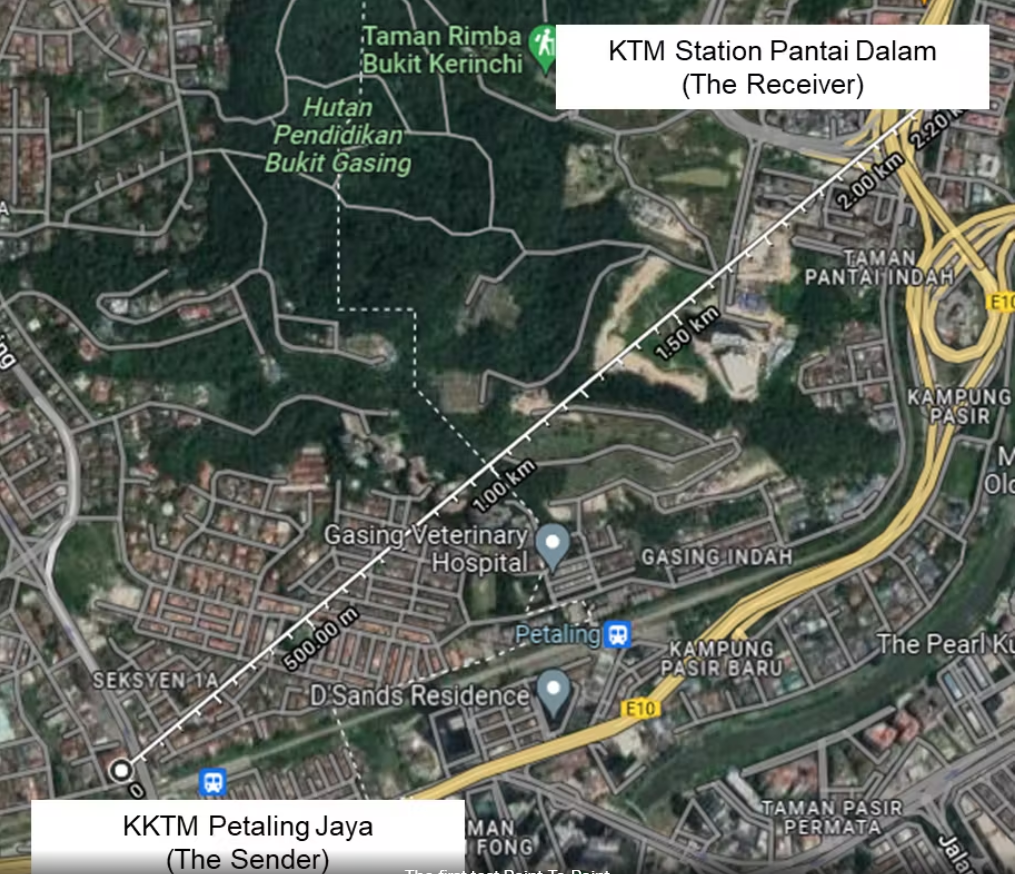
The First Test of Point-to-Point Network
The initial test is carried out between the LoRa® sender and receiver. The receiver is connected to the internet via the cellphone’s cellular network. It may receive data from the sender while the LoRa® communication is active. The field test indicated that the pair connection can go up to 2.20 kilometers, which is noteworthy considering the test site is in the suburbs.
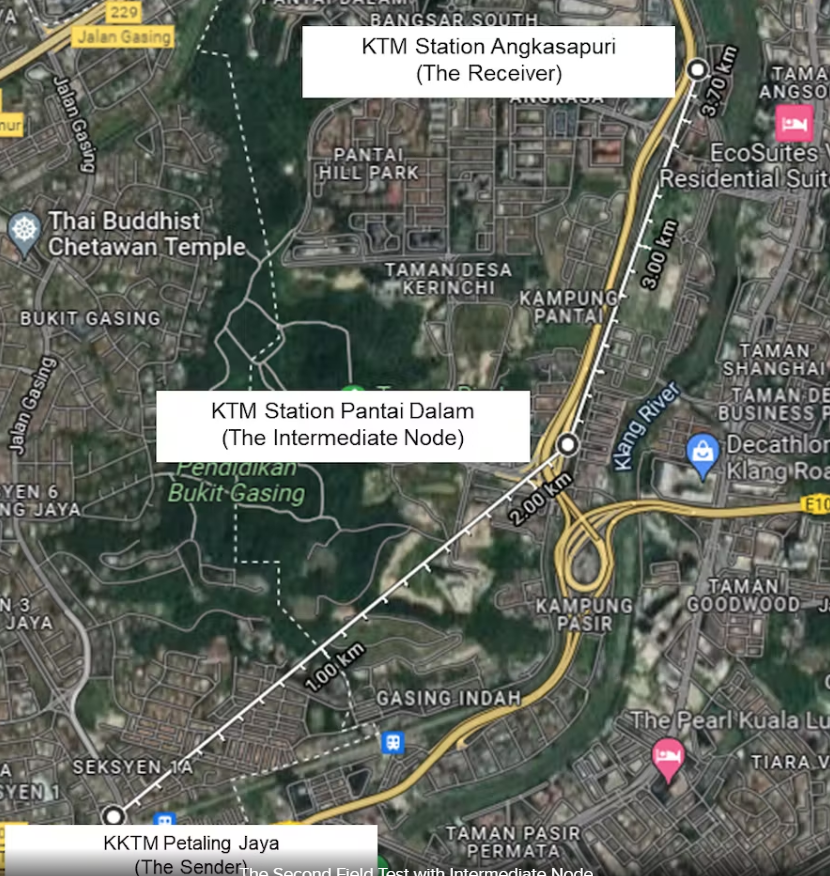
The Second Test with the Intermediate Node
Nextly, another LoRa® development board which is the Wio-E5 Parallel MCU Development Board was added to act as the intermediate node or the middleman between the LoRa® sender and the receiver. Previously, one could only obtain signals within 2.20 kilometers; today, with the intermediate node, the range gets up to 3.7 kilometers.
Result for LoRa® Sensor Node Power Consumption Measurement
Aiman used a multimeter to measure the currents of the Board and the sensor to determine power usage. Here is the result of the one-hour measurement. The battery used is a 18650 Li-Ion battery with a capacity of 2000mAh.
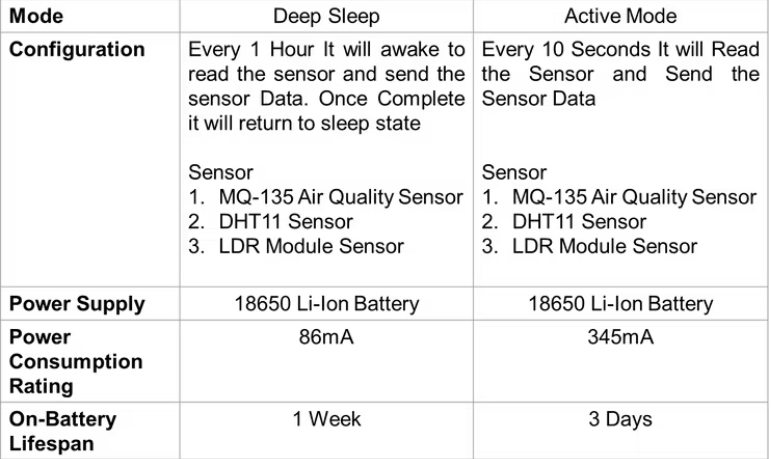
Deep Sleep vs Active Mode
Conclusions
Following field testing, both recommended methods extended the LoRa® communication range while decreasing the power consumption of the LoRa® sensor node. The previous P2P transmission range is just 2.2 kilometers, however, with an Intermediate Node, the range may be increased to 3.7 kilometers. When compared to the normal setup, the LoRa® sensor node with battery power may survive 2.45 times longer with the Deep Sleep configuration.
Get your Wio-E5 project manufactured for FREE with Seeed Fusion PCB Assembly Service

Wio-E5 PCBA Sponsorship Service
To accelerate the development of the IoT industry to the next level, Seeed is 100% sponsoring Wio-E5 projects with the Seeed Fusion PCB Assembly Service for all hardware enthusiasts, designers, makers, and engineers around the world!
Good ideas need to be discovered, and good projects deserve to be recognized, realized and widely disseminated! Each person is limited to two PCBA boards 100% completely FREE for one design, including PCB fabrication, the cost of parts, assembly, and shipping. The design must include Wio-E5.
If you have an interesting concept for Wio-E5 and are willing to share it with the community, share it with us and we can help you make it a reality with Seeed Fusion’s one-stop-shop capabilities. Get 2 boards fabricated and assembled completely free with Seeed Fusion’s turnkey PCB Assembly service.
Furthermore, choose all your parts from the PCBA Open Parts Libraries (OPL) and reduce the lead time to as little as 7 working days. Meanwhile, if you have mass production requirements, we highly recommend taking advantage of the Seeed Fusion PCB Assembly service and getting the Wio-E5 modules for only US$7.90 (28% discount, original price US$10.90).
Take action to bring your Wio-E5 projects to the next level!
Note: The LoRa® Mark is a trademark of Semtech Corporation or its subsidiaries.